After spending the morning touring St. Paul, we crossed the Mississippi to visit the Guthrie Theater and the Minneapolis Sculpture Garden with monumental sculptures scattered around a space landscaped with native prairie grasses and flowers.
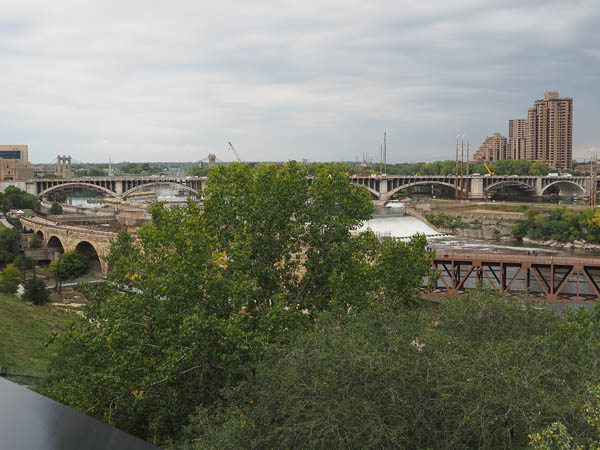
Our first stop was the Guthrie Theater. The original venue opened in 1963 under the sponsorship of Sir Tyrone Guthrie. I saw Chekhov's Uncle Vanya there in 1968.
In 2006 the Theater moved to its new location overlooking the Mississippi River, and that is what brought us here today (we didn't have time, alas, to attend a production although there was a matinee in progress at the time of our visit). There are several theater venues and a fabulous overlook of what remains of St. Anthony's Falls on the Mississippi River.
The falls have long since been modified from their natural state in order to drive the milling industry that was the foundation of settlement in the area. At present the water flows over a concrete spillway. The falls were bypassed by a navigation lock, now closed to prevent non-native Asian carp from invading the river above Minneapolis. Controversy continues over the future of the lock.
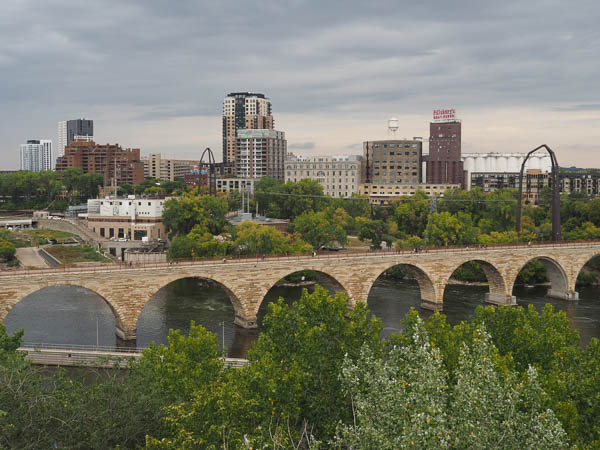
The stone arch bridge over the Mississippi was built in 1883 by James J. Hill to connect his Great Northern Railway to the proposed Union Depot. It is now a pedestrian and bicycle bridge.
Part of the bridge was demolished and replaced by steel trusses, seen in the photo above, to improve access via the now-closed lock.
Throughout the trip on the Upper Mississippi, I was amazed by the number of bridges over the river, even at relatively small towns. In the entire state of Mississippi there are only three bridges spanning the river. Of course it is much larger there (and there are fewer cities).
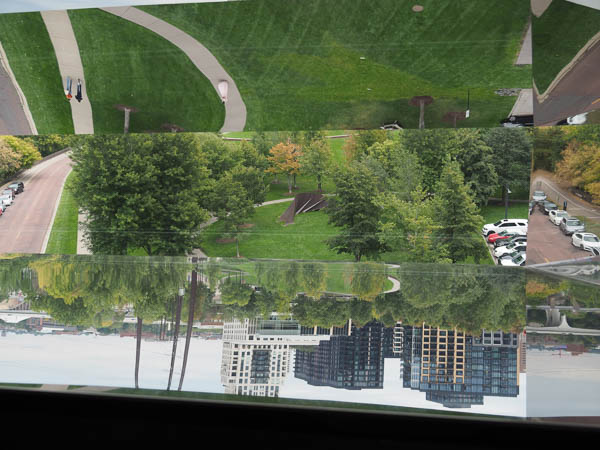
As we walked to the overlook, we passed several mind-boggling windows. The mirrored surfaces reflected the view outside and each other for a surreal effect.
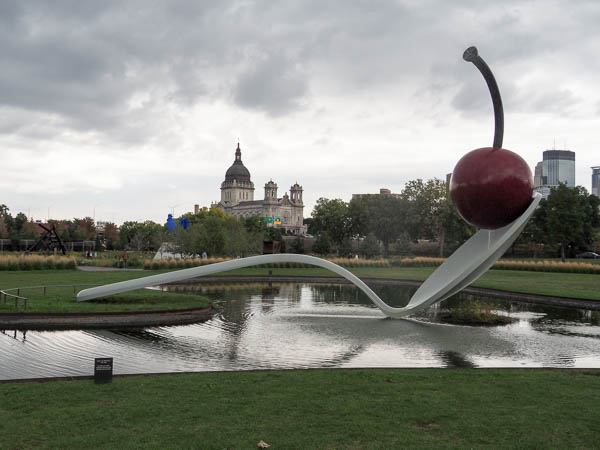
The Claes Oldenburg & Coosje van Bruggen sculpture Spoonbridge and Cherry is the centerpiece of the Minneapolis Sculpture Garden. The grey skies hide the fountain coming from the cherry's stem, but its ripples can be seen in the water below.
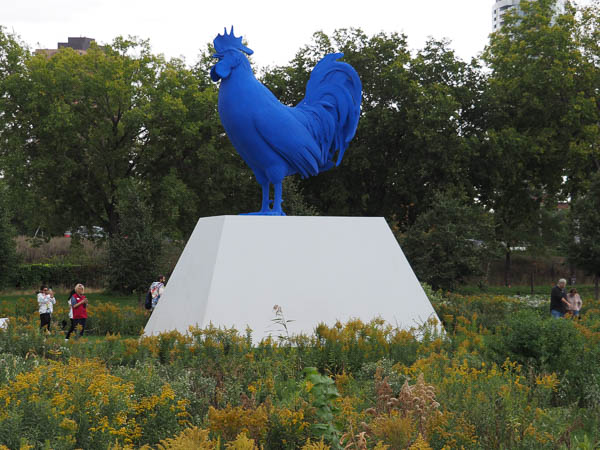
This is Katharina Fritsch's 2013 sculpture "Hahn" (Cock).
Goldenrod and prairie grasses are much nicer than mown sward.
One of my cousins had a prairie restoration project on his 50-acre estate in Kansas. The hardest part, he said, was selling his neighbors on the periodic burning key to maintaining such an environment. Once convinced, they eagerly helped make sure that the burning was contained.
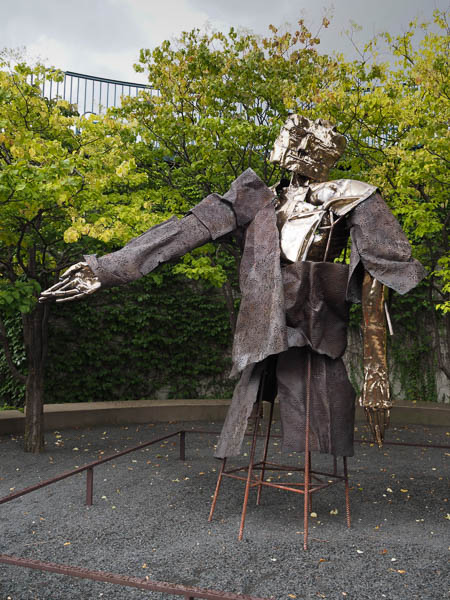
The sculpture Hephaestus by Matthew Monahan attracted me by its varied surfaces and forms. Close-up images may be seen at the link.
Hephaestus is the Greek god of the forge. He was the lame son of Hera, maybe by parthenogenesis or maybe the son of Zeus. He was unhappily married to Aphrodite.
As in most Greek myths, there are tangled threads.
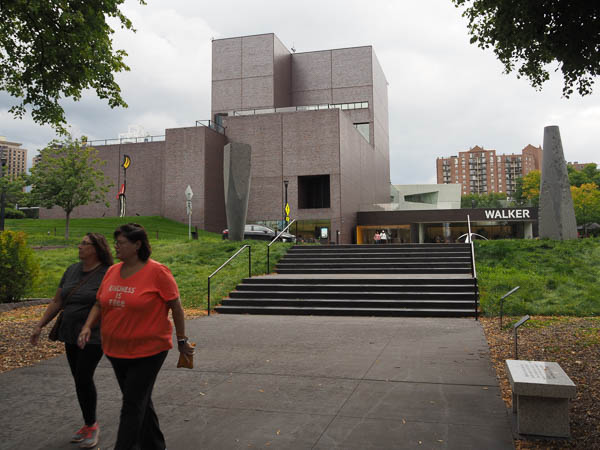
The Walker Art Center established and oversees the sculpture garden.
The museum was based on the collection of Thomas Barlow Walker who amassed a collection of Old Masters and other works. According to our guide he left the collection to a daughter (or niece, or grand-daughter) but didn't stipulate what to do with it. She sold most of the old artworks to fund the purchase of modern art for which the Center is known today.
Click your "back" button to return to the previous page or click for our picture album.